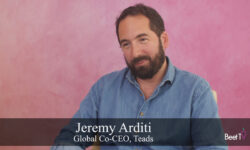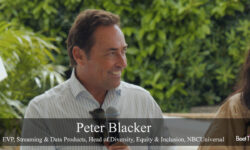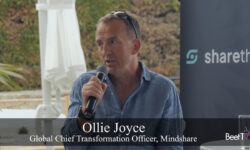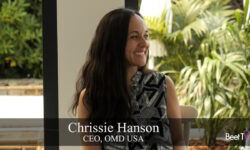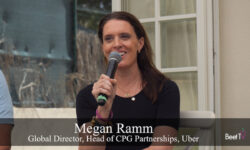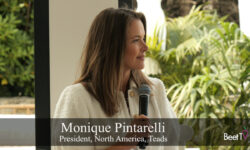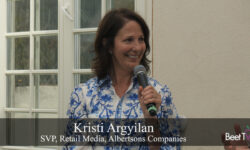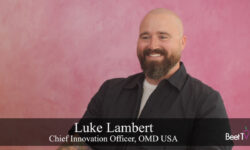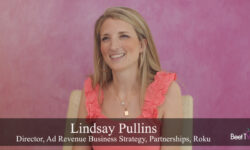CANNES — When you are an ad-tech firm in an industry waking up to the carbon impact of digital communications, how can you reach net zero?
“We were able to achieve and reduce and meet our goal within five years. But it was a journey and it’s not a straightforward journey,” says Andy Hammond, Senior Director, Advanced TV at OpenX.
In this video interview with VAB president and CEO Sean Cunningham for Beet.TV, he delves into the company’s journey to becoming net zero and the unexpected benefits that came along the way.
The answer was in the clouds
Hammond explains that OpenX’s journey to net zero actually began as a cost-saving measure.
“We started in 2018, six years ago, by moving and making a business decision to move and close down our own servers, which we owned, and moving everything to the cloud; we partnered with Google.”
This business decision not only resulted in a more secure data environment and quicker campaign delivery but also reduced emissions significantly.
But what are the tangible benefits of this transition? According to Hammond: “It’s safer in terms of storing your data. It can bring ad campaigns to market faster and quicker, more accuracy as well… and it saved us money. It was a better business decision and we call it a happy accident.”
The Difference Between Net Zero and Carbon Neutral
When asked about the difference between net zero and carbon neutral, Hammond clarifies:
- Net Zero: “Being net zero is actually benchmarking yourself and then reducing your emissions.”
- Carbon Neutral: “Being carbon neutral is fine and it’s a good first step, but a lot of those companies… are offsetting the amount of carbon they use versus another company.”
He emphasizes that while purchasing carbon credits is a step towards sustainability, it does not replace the need for businesses to measure and reduce their emissions.
Now OpenX is keen on sharing its strategies with other businesses, “in the hopes that other companies will also take those steps”.
The Advantage for Advertisers
Many brands and their ad agencies are nowadays demanding their ad operations measure and reduce their carbon footprint. But some are finding the environmental benefits filter back to the bottom line.
Hammond explains that supply side targeting results in a better match rate and is also environmentally friendly. “For the advertiser, it’s just a better match rate, but it’s also very environmentally friendly.
“So they’re going to get better scale and better match to their audiences by doing supply side targeting because our graph sits right up against the publisher’s supply, and then it’s better for the environment because you can take a deal ID that we will build and then put that into a DSP.”
You are watching ‘The Transformation Of Television: Connected, Addressable & Outcome-Based,’ presented by Go Addressable & Teads at the Cannes Lions International Festival of Creativity. For more videos from Beet.TV’s Cannes Lions 2023 coverage, please visit this page.







